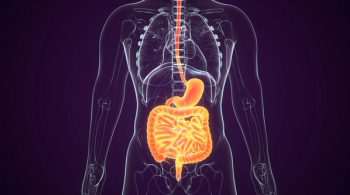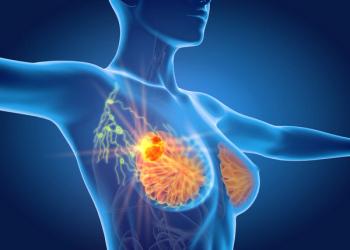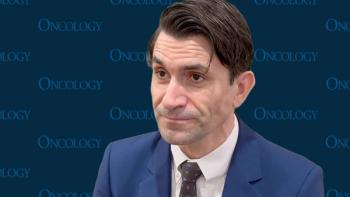
Adavosertib Plus Irinotecan Combination Met Efficacy End Point for Pediatric Neuroblastoma
Data presented at the virtual AACR Annual Meeting 2021 showed that a phase 2 trial examining combination treatment with adavosertib plus irinotecan met its protocol-defined efficacy end point in a cohort of pediatric patients with neuroblastoma.
Data from the phase 1/2 ADVL1312 trial (NCT02095132) presented virtually at the AACR Annual Meeting 2021 found that in a cohort of pediatric patients with neuroblastoma, therapy with adavosertib plus irinotecan achieved the study’s protocol-defined efficacy end point.
More, adavosertib plus irinotecan also showed the potential to benefit patients with ATRX-mutant tumors, with further validation required for this effect.
“In order to look for an early signal of activity and to obtain more information regarding toxicity of the recommended phase 2 dose, the ADVL1312 trial proceeded with a phase 2 expansion in 3 pediatric disease-specific cohorts,” presenting author Kristina A. Cole, MD, PhD, of Children’s Hospital of Philadelphia and Perelman School of Medicine of the University of Pennsylvania, said in the presentation of the data.
The 3 pediatric cohorts analyzed in the expansion phase of this trial included neuroblastoma (n = 20), medulloblastoma with central nervous system (CNS) embryonal tumors (n = 10), and rhabdomyosarcoma (n = 10).
Overall, 3 objective responses were recorded from 16 eligible patients in the neuroblastoma cohort, which met the protocol-defined efficacy end point. Meanwhile, there was 1 recorded objective response in the group with medulloblastoma and CNS embryonal tumors and no responses with rhabdomyosarcoma, respectively.
The investigative team also sought to determine factors correlated with clinical response, focusing on the ATRX chromatin remodeler gene. Twelve of the archival ADVL1312 tumors were evaluated.
Ultrabright telomeric foci (UBTF) were present in tumors from 2 of the 3 patients who experienced an objective response. More, ATRX deficiency was present in 4 of the 9 patients with clinical response or stable disease.
Common grade 3 or higher adverse events included neutropenia (5 events in the neuroblastoma cohort; 4 events in medulloblastoma; and 3 events in rhabdomyosarcoma), lymphopenia (4 events; 2 events; and 1 event, respectively), and leukopenia (2 events vs 2 events vs 0 events).
More, the toxicity profile of ADVL1312 featured no dose-limiting toxicities at cycle 1 or later at the maximum-tolerated dose. Regardless of this finding, and although the combination was well tolerated, the investigative team notes that oral irinotecan is not palatable.
The investigative team utilized the phase 2 data from irinotecan to inform the efficacy end point for the combination therapy analyzed in the expansion portion of ADVL1312. In order to define the therapy as effective in the neuroblastoma and rhabdomyosarcoma cohorts, 3 objective responses out of 20 eligible patients were required. More, 6 response out of 19 eligible patients were required for efficacy in the medulloblastoma with CNS embryonal tumors cohort.
“Several of the limitations of this study relate to the fact that it was a phase 2 expansion,” explained Cole. “For example, patients were eligible for response regardless of if they completed a cycle of therapy or had their disease reevaluated. One-third of patients discontinued therapy with stable disease or better.”
Median age for patients in the neuroblastoma cohort was 9 years (range, 6-19), with a majority of patients being male (65%) and White (60%). In the medulloblastoma cohort, the median age was 13.5 years (range, 6-20), with a majority of patients female (60%) and White (70%). Lastly, the rhabdomyosarcoma cohort reported a median age of 11 years (range, 4-16) with 80% of patients reporting as male and 90% of patients reporting as White.
Looking ahead, because of the satisfaction with the preliminary findings in this expansion trial, Cole noted that an adavosertib pediatric development plan is being discussed.
Reference:
Cole KA, et al. Pediatric phase 2 trial of the WEE1 inhibitor adavosertib (AZD1775) and irinotecan; A Children’s Oncology Group Study (ADVL1312). Presented at: AACR Annual Meeting 2021; April 10-15, 2021; Virtual. Abstract CT029.
Newsletter
Stay up to date on recent advances in the multidisciplinary approach to cancer.
















































































